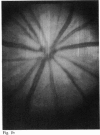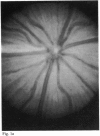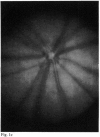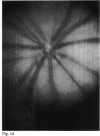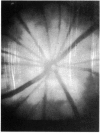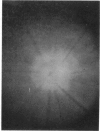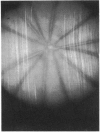Abstract
A characteristic fundus picture was consistently produced following acute bilateral common carotid artery ligation in mature rats, reminiscent of human carotid occlusive disease. Two days after ligation it consisted of dilatation and tortuosity of retinal veins, blurring and swelling of the optic disc, retinal whitening primarily along the venous distribution, and straightening of retinal arteries. Fluorescein angiography showed hyperfluorescence of the disc, delay in the rate of retinal arterial and venous filling, venous dilatation, disc oedema, disruption of the retinal capillary bed pattern, and late peripapillary staining/leakage. This pattern was not seen in rats which underwent acute unilateral ligation, although some mild changes were seen on fluorescein angiography. The vascular alterations seemed to regress spontaneously within one week. A peripapillary 'halo' and a granular-appearing nerve fibre layer developed later, exclusively in bilaterally ligated animals.
Full text
PDF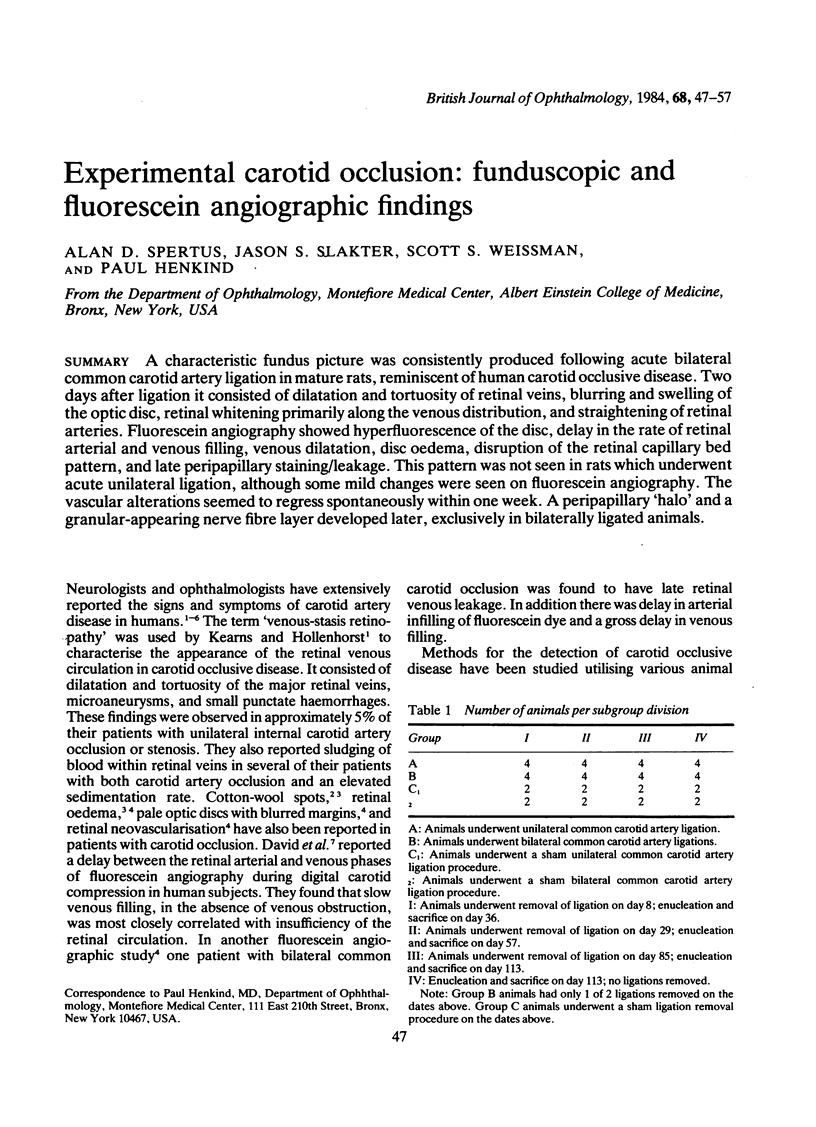
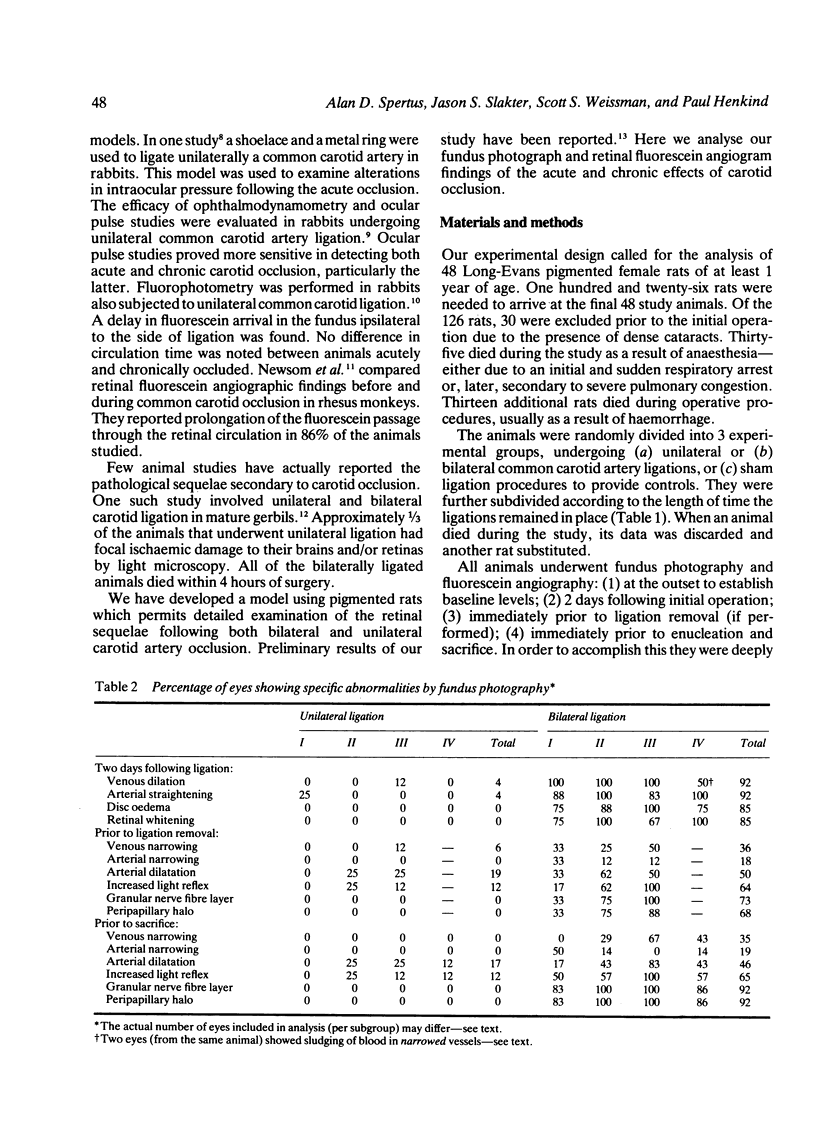
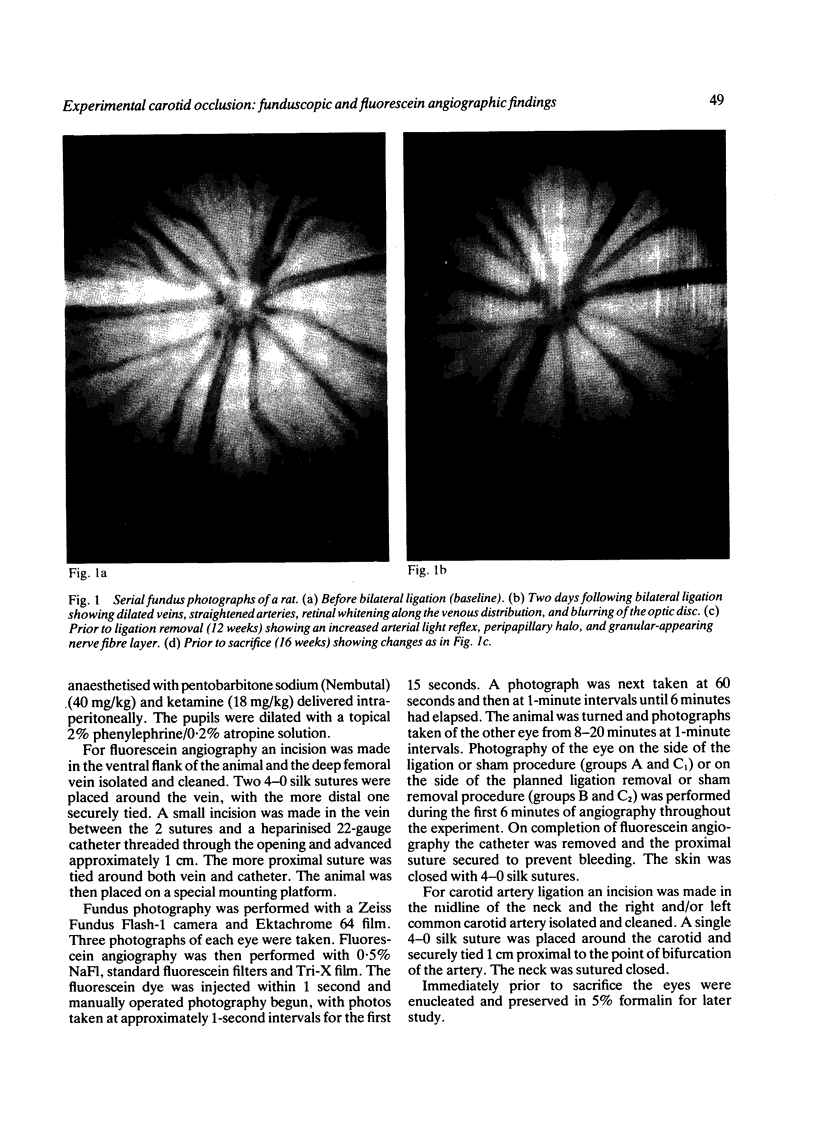
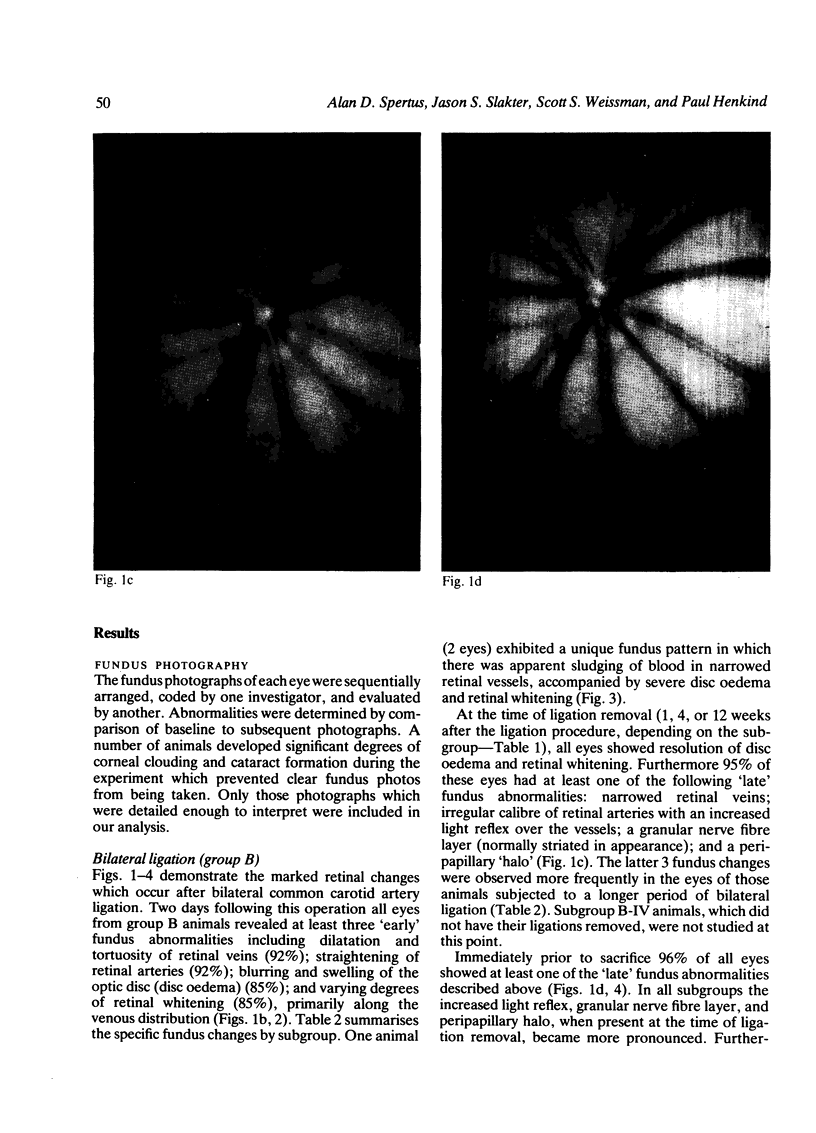
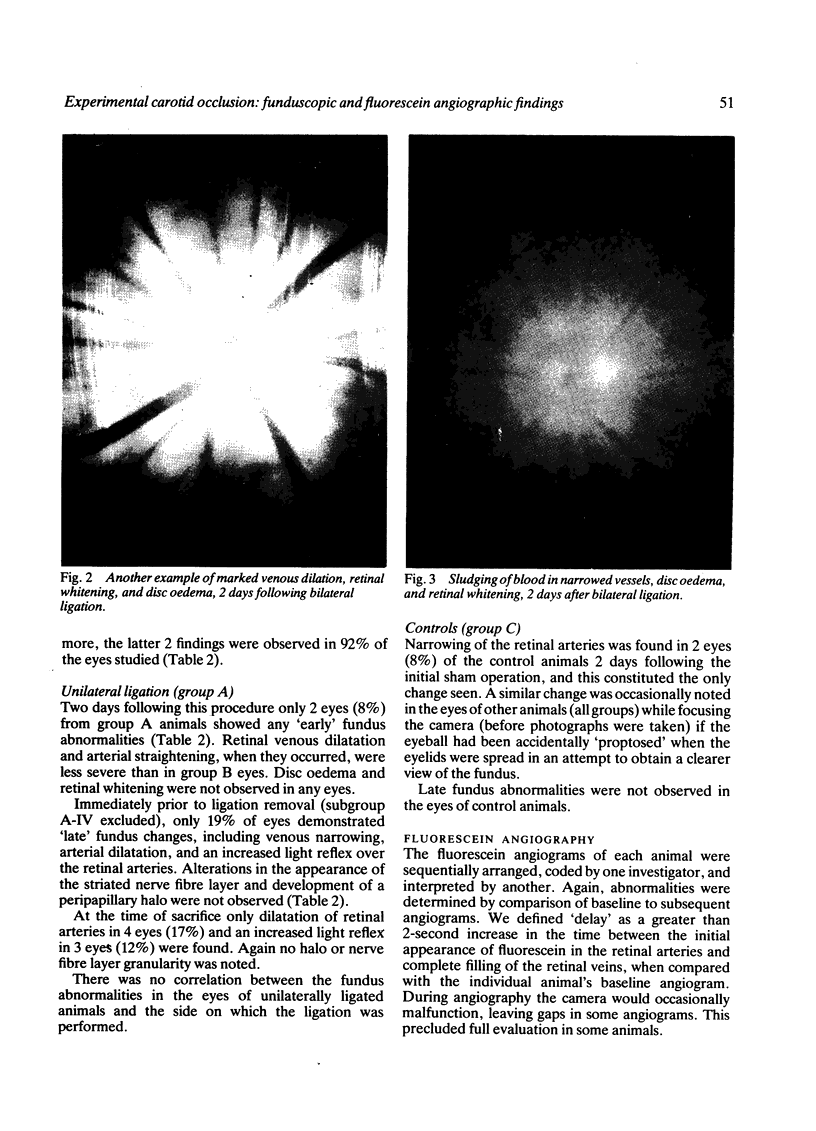
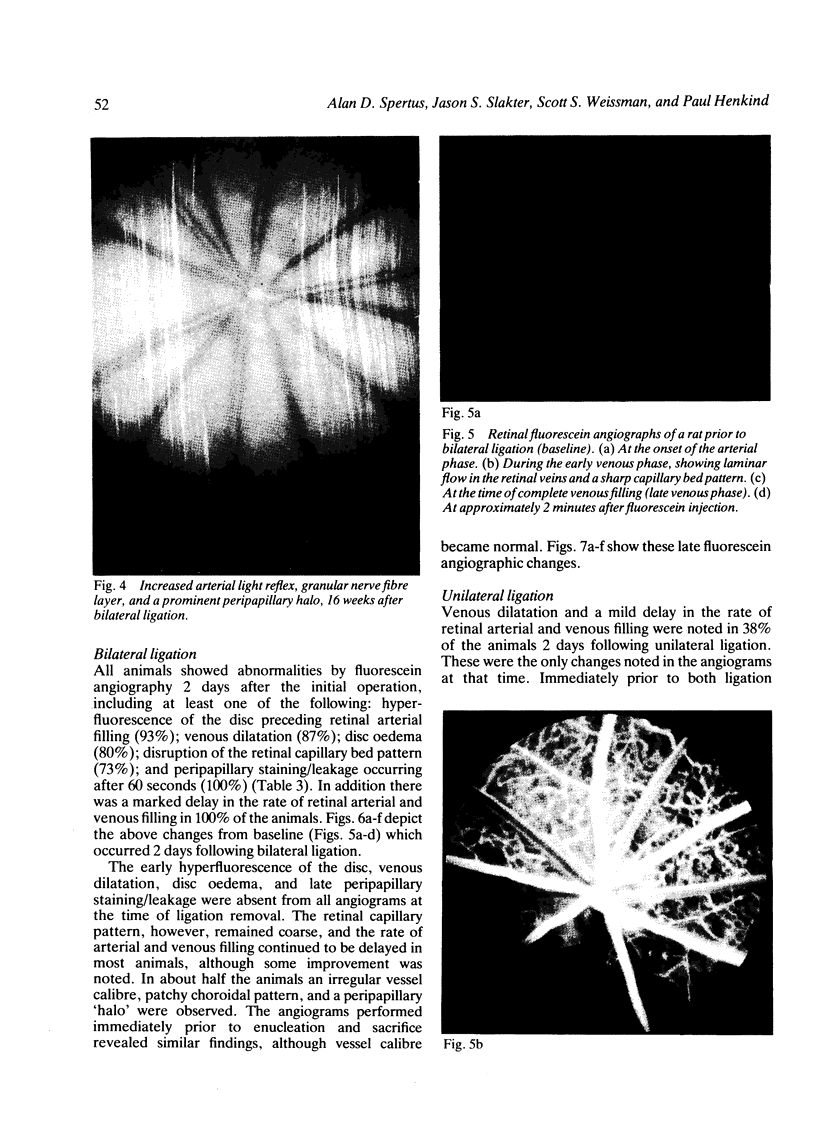

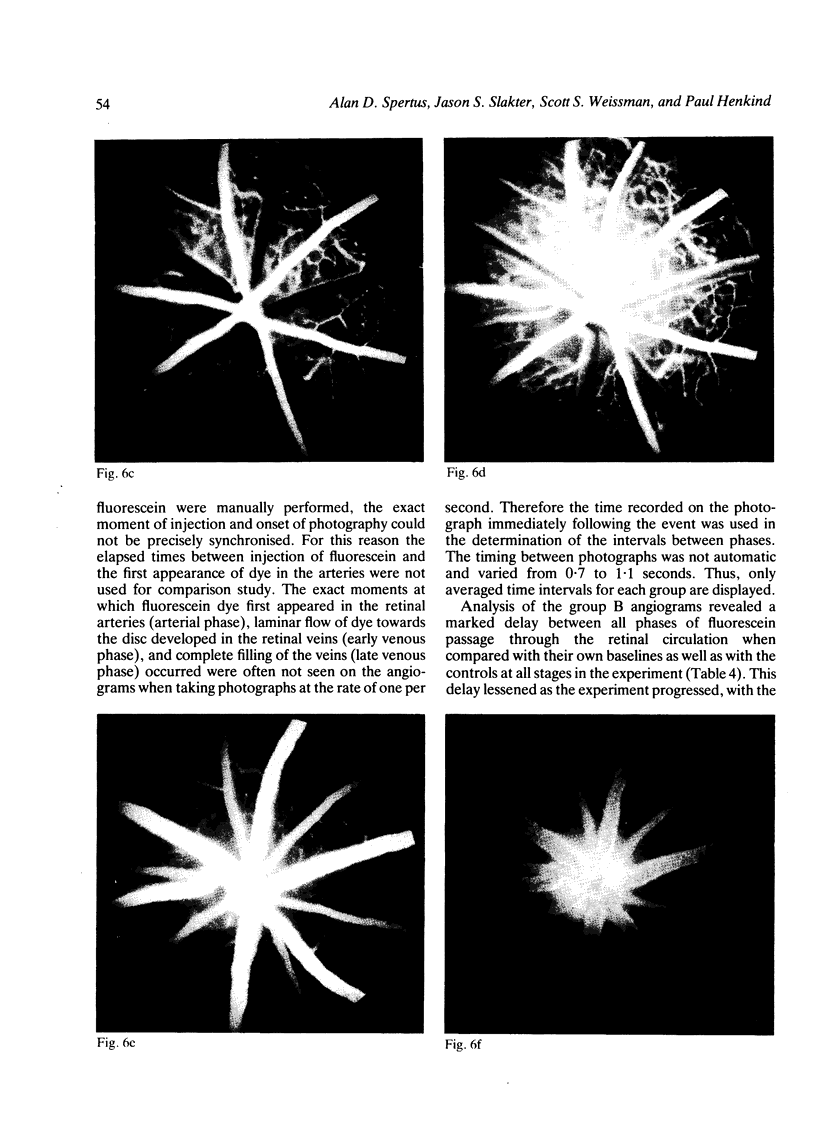
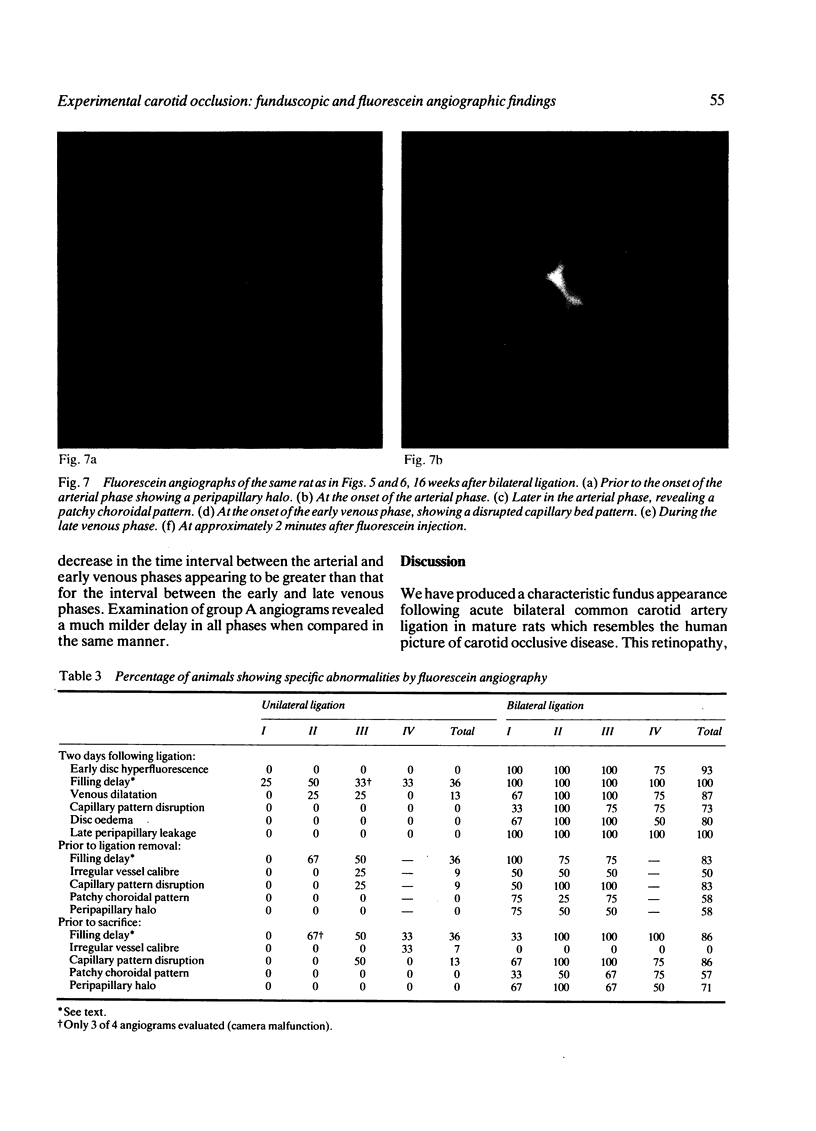
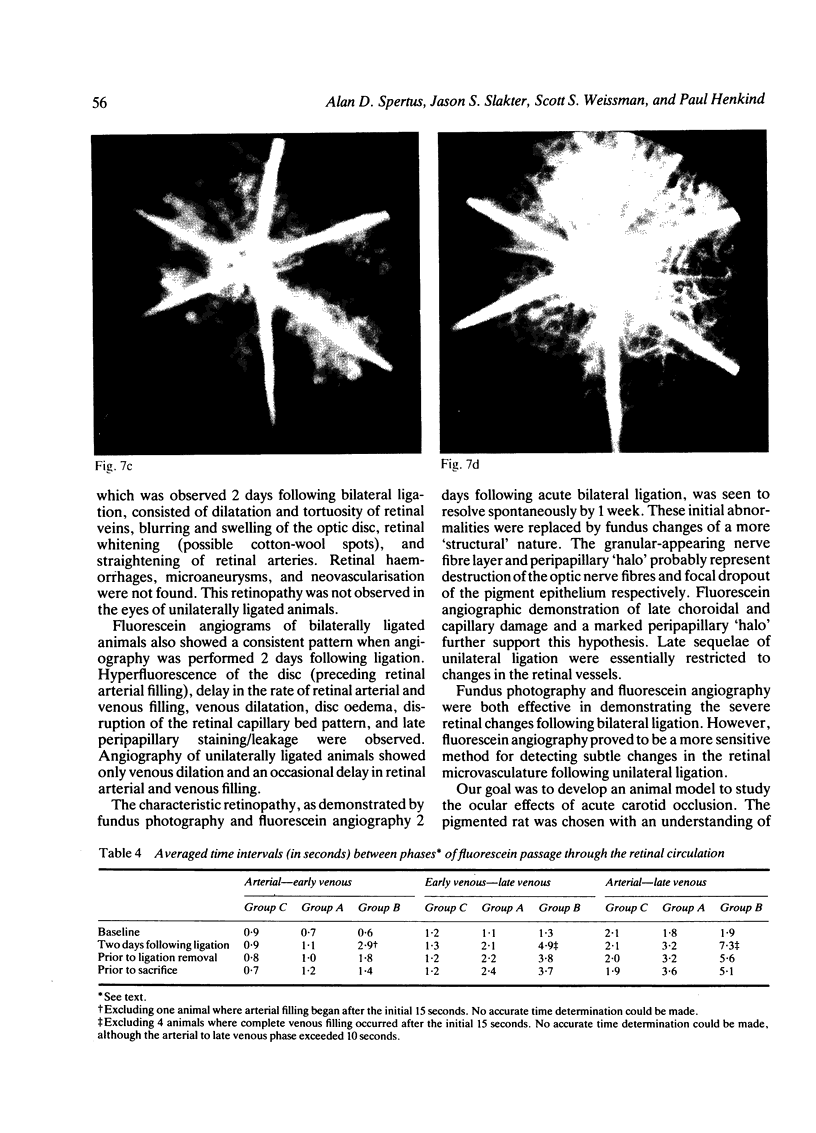
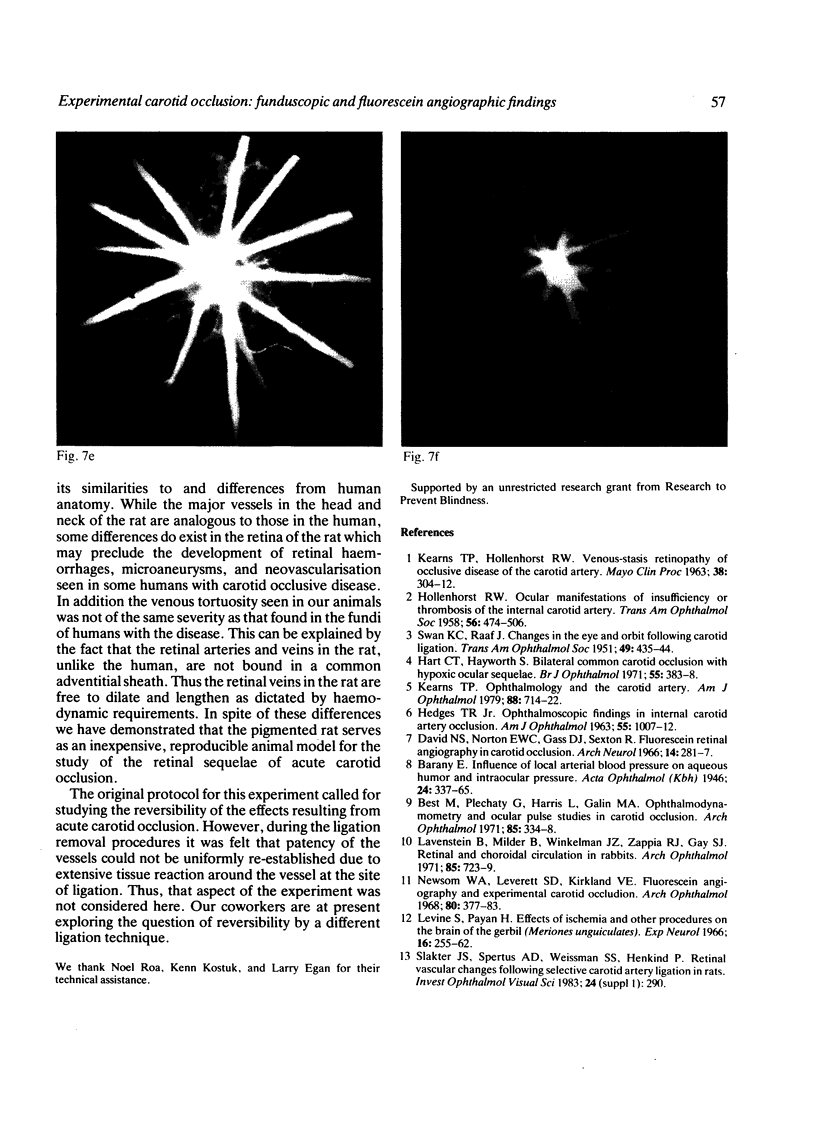
Images in this article
Selected References
These references are in PubMed. This may not be the complete list of references from this article.
- Best M., Plechaty G., Harris L., Galin M. A. Ophthalmodynamometry and ocular pulse studies in carotid occlusion. Arch Ophthalmol. 1971 Mar;85(3):334–338. doi: 10.1001/archopht.1971.00990050336019. [DOI] [PubMed] [Google Scholar]
- David N. J., Norton E. W., Gass J. D., Sexton R. Fluorescein retinal angiography in carotid occlusion. Arch Neurol. 1966 Mar;14(3):281–287. doi: 10.1001/archneur.1966.00470090053007. [DOI] [PubMed] [Google Scholar]
- HEDGES T. R., Jr Ophthalmoscopic findings in internal carotid artery occlusion. Am J Ophthalmol. 1963 May;55:1007–1012. [PubMed] [Google Scholar]
- HOLLENHORST R. W. Ocular manifestations of insufficiency or thrombosis of the internal carotid artery. Trans Am Ophthalmol Soc. 1958;56:474–506. [PMC free article] [PubMed] [Google Scholar]
- Hart C. T., Haworth S. Bilateral common carotid occlusion with hypoxic ocular sequelae. Br J Ophthalmol. 1971 Jun;55(6):383–388. doi: 10.1136/bjo.55.6.383. [DOI] [PMC free article] [PubMed] [Google Scholar]
- KEARNS T. P., HOLLENHORST R. W. VENOUS-STASIS RETINOPATHY OF OCCLUSIVE DISEASE OF THE CAROTID ARTERY. Proc Staff Meet Mayo Clin. 1963 Jul 17;38:304–312. [PubMed] [Google Scholar]
- Kearns T. P. Ophthalmology and the carotid artery. Am J Ophthalmol. 1979 Oct;88(4):714–722. doi: 10.1016/0002-9394(79)90671-8. [DOI] [PubMed] [Google Scholar]
- Lavenstein B., Milder B., Winkelman J. Z., Zappia R. J., Gay A. J. Retinal and choroidal circulation in rabbits. Fluorophotometer measurements in animals with and without carotid artery occlusion. Arch Ophthalmol. 1971 Jun;85(6):723–729. doi: 10.1001/archopht.1971.00990050725014. [DOI] [PubMed] [Google Scholar]
- Levine S., Payan H. Effects of ischemia and other procedures on the brain and retina of the gerbil (Meriones unguiculatus). Exp Neurol. 1966 Nov;16(3):255–262. doi: 10.1016/0014-4886(66)90062-8. [DOI] [PubMed] [Google Scholar]
- Newsom W. A., Leverett S. D., Jr, Kirkland V. E. Fluorescence angiography and experimental carotid occlusion. Arch Ophthalmol. 1968 Sep;80(3):377–383. doi: 10.1001/archopht.1968.00980050379018. [DOI] [PubMed] [Google Scholar]
- SWAN K. C., RAAF J. Changes in the eye and orbit following carotid ligation. Trans Am Soc Ophthalmol Otolaryngol Allergy. 1951;49:435–444. [PubMed] [Google Scholar]



